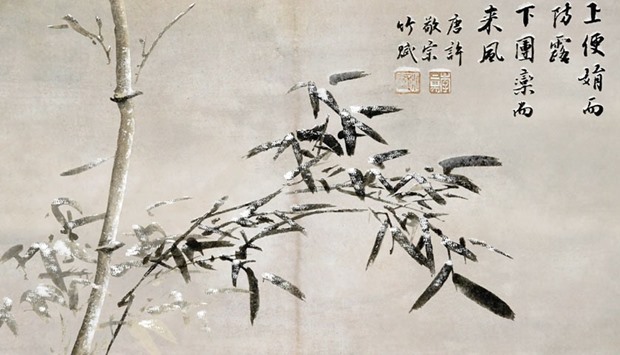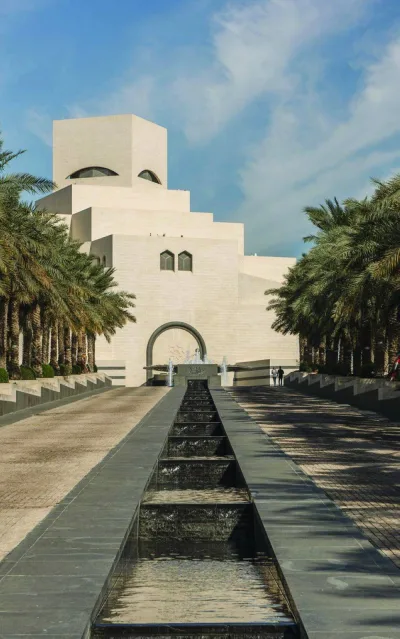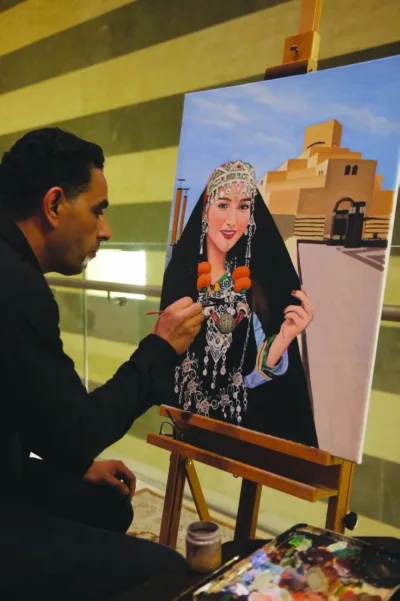The great Korean-American artist Nam June Paik is credited for transforming video into an artist’s medium with his media-based art that challenged and changed how we consume visual culture.
For acclaimed Korean artist Lee Lee Nam, who creates amalgamations of today’s high-tech environment and traditional culture, June Paik is an artist he most reveres.
Known for his signature style of video art that breathes new life into famous classic paintings, Lee Lee Nam’s Digitally Traditional introduces his creative and imaginative video art world. It also presents traditional Korean ink painting masterpieces re-interpreted by the artist in a contemporary video art form.
The Embassy of the Republic of Korea in Qatar has announced that ASAN Gallery of Korea, in co-operation with Gallery One of Qatar, is all set to organise an exhibition of Lee Nam’s video artworks from February 1 to 14 at Katara Art Center, Building 5.
In a note on the announcement, the embassy has shared the following detailed note about the artist: Lee Lee Nam has been known for his inventive video art style that enlivens the well-known European paintings, such as Mona Lisa by Leonardo da Vinci or Le Déjeuner sur l’herbe (The Luncheon on the Grass) by Édouard Manet, alive.
With Lee Lee Nam’s touches, Mona Lisa makes a bigger smile — that made us always confused — and the environmental surroundings of Manet’s painting are transformed into a Korean landscape. Not only that, the characters and backgrounds in the painting are constantly moving in lively movement in his works.
The visual illusions, which seem very real with his cutting-edge techniques, keep the momentum generated in the original works, but at the same time they break the tradition of two-dimensional painting by turning it into an animated and interactive being.
Lee Lee Nam said he borrowed the images from classic paintings to make contemporary art friendlier for the public after he found the intimacy that people feel being in front of an artwork with deep and serious philosophical discourses.
Lee Lee Nam breathes new life into masterpieces created in the Joseon dynasty (1392 - 1920), Korea by using his signature skills. The butterflies are flying around crossing the different screens of Shin Saimdang’s (1504-1551) painting, Egg Plant and Grasshoppers, mountains of Gyumjae Jeongseon’s (1676-1759) landscape paintings transform their colours, changing their flowers and trees in the four seasons and the sound of hammering at a Korean traditional blacksmith’s shop gets louder as the workers continue in Kim Hong-do’s (1745-1806) folk paintings.
According to the website Sedition Art, Lee Nam, with exceptional finesse, “creates mesmerising digital and video works that juxtapose European old master paintings and traditional Asian art with modern day imagery.”
The artworks are overlaid and interwoven like a palimpsest, creating an image as fictitious as dreams overlapping reality, the site says in its profile on the artist. “For example, at the Saatchi Gallery, London, the static iconography of swans, butterflies, and birds moves across an eight-fold LED monitor surrounded by traditional Asian folding screens. Boats float across the screens, butterflies scatter, it begins to snow in both a Korean and a European old master work, creating a likeness between the two images in appearance and mood.”
“These digitalised paintings are as alluringly beautiful as they are surprisingly familiar: as if the world’s most famous paintings have come alive to correspond and compare, and by encompassing both the traditional and modern – in style and medium – Lee Lee Nam’s works can be called a truly post-modern narrative,” the profile points out.
Lee Lee Nam studied sculpture at the College of Fine Arts, Chosun University, Korea, where he graduated in 1995. However, his interest in animation led him to study Media Art at the Graduate School of Communication and Arts of Yonsei University, Korea, where he completed his Doctorate in Fine Arts in 2007.
He has said he would like to be called a “media artist”, and generally, he is referred to as such. His work has been shown internationally including at the Hong Kong Art Centre, Hong Kong (2010); Sun Gallery, Korea (2010); Alon Zakaim Fine Art, London (2009); and The Detroit Wayne State University Art Centre, Detroit (2011); and at ARTMIA, Beijing, 2013.

CONVERGENCE: One of Lee Lee Nam’s works, Drawing Bamboo.


